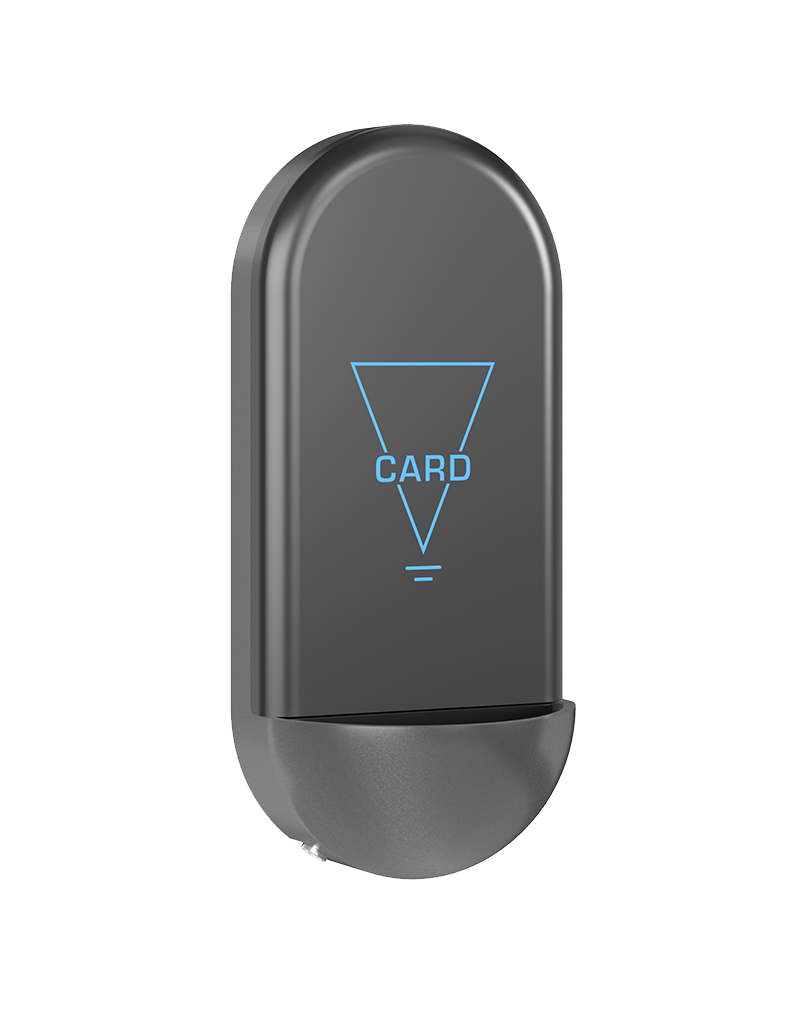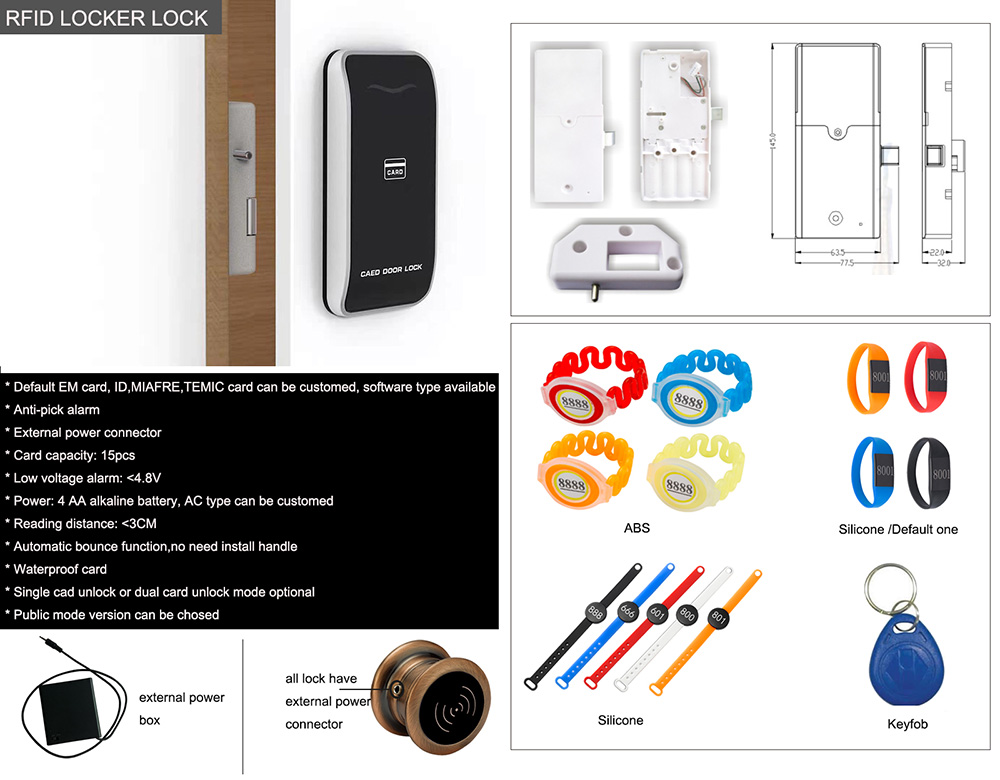
- Home
- Products
- About Us
- Application
- Download
- Video
- Contact Us
Oct. 26, 2024
In the realm of smart security, both RFID and fingerprint locks are popular choices for access control across various applications, from hotels to offices and residential properties. As a trusted smart lock manufacturer, YORFAN offers a range of advanced locking solutions that cater to diverse security needs. Understanding the differences between RFID and fingerprint locks is crucial for selecting the right access control system. This article explores these two technologies, comparing their features, benefits, and suitable use cases.
RFID (Radio Frequency Identification) and fingerprint locks are both types of electronic locks that provide keyless access and enhance security. However, they differ in how they identify and grant access to authorized users.
An RFID lock uses Radio Frequency Identification technology to grant access. It relies on a keycard, fob, or smartphone equipped with an RFID chip, which communicates with the lock to unlock the door when placed near the RFID reader.
A fingerprint lock uses biometric technology to identify users based on their unique fingerprint patterns. When an authorized fingerprint is scanned, the lock verifies the user's identity and grants access, ensuring a high level of security.
RFID and fingerprint locks offer distinct features and benefits, making them suitable for different scenarios. Below are the primary differences between these two smart lock technologies.
The most significant difference between RFID and fingerprint locks lies in how they control access.
Keycard or Fob-Based Access: Requires the user to carry an RFID-enabled device (such as a keycard or fob) to unlock the door.
Contactless Entry: Provides contactless access, where the user only needs to place the RFID device near the lock.
Multi-User Capability: Easy to issue additional keycards or fobs for multiple users, making it suitable for hotels and office environments.
Biometric Authentication: Uses the unique fingerprint patterns of authorized users to grant access.
No Physical Key Required: Eliminates the need for carrying physical keys, cards, or fobs.
High Security: Fingerprints are unique to each individual, making it nearly impossible for unauthorized users to gain access.


While both RFID and fingerprint locks offer enhanced security compared to traditional locks, they provide different levels of protection.
Encryption Protection: RFID locks typically use encryption to secure the communication between the lock and the RFID device, making them resistant to hacking.
Risk of Keycard Loss: If a keycard or fob is lost or stolen, it can be used by an unauthorized person unless it is deactivated.
Suitable for Multi-User Environments: Provides a good balance of security and convenience for settings with frequent changes in user access, such as hotels or offices.
High-Level Security: Since fingerprints are unique to each individual, fingerprint locks provide a higher level of security.
No Risk of Lost Keys: There is no physical key or card that can be lost, stolen, or duplicated.
Anti-Tampering Features: Many fingerprint locks include anti-tampering mechanisms that trigger alarms if unauthorized access is attempted.
Fingerprint locks are generally considered more secure than RFID locks, especially for high-security areas where user identity verification is critical.
The convenience and ease of use offered by RFID and fingerprint locks differ, affecting user experience based on the application.
Quick and Contactless Access: Users can unlock the door quickly by tapping the keycard or fob near the lock.
Multiple Access Methods: RFID locks can be integrated with mobile apps for smartphone-based access, adding convenience.
Ideal for Temporary Access: Perfect for scenarios where temporary access is needed, such as issuing guest keycards in hotels.
Keyless and Hassle-Free: Users don’t need to carry a physical key or card; their fingerprint is all they need to unlock the door.
No Need for Replacement Cards: There’s no need to worry about lost or damaged keycards, making it ideal for long-term use.
High Personalization: Each user’s fingerprint is unique, making fingerprint locks highly personalized for individual access.
Fingerprint locks provide a high level of convenience for residential and private office use, where user access is limited to a few individuals.
Both RFID and fingerprint locks require some level of installation and maintenance, but the requirements vary depending on the technology used.
Simple Installation: RFID locks are relatively easy to install, especially on existing door frames.
Maintenance Involves Keycard Management: Requires the management of keycards or fobs, including issuing, deactivating, and replacing them as needed.
Software Updates: Some RFID systems may require periodic software updates to maintain security standards.
Slightly More Complex Installation: Fingerprint locks may require a bit more installation effort due to the need for biometric scanning hardware.
Low Ongoing Maintenance: Requires minimal maintenance since there are no keycards or fobs to manage.
Firmware Updates: Regular firmware updates may be needed to ensure the biometric software remains accurate and secure.
Fingerprint locks generally have lower ongoing maintenance costs due to the absence of physical keys or cards.
The cost of implementing RFID and fingerprint locks varies depending on the system's complexity and the number of units required.
Lower Initial Cost: Typically, RFID locks have a lower initial cost, making them a cost-effective solution for large facilities.
Keycard Replacement Costs: There may be ongoing costs associated with issuing and replacing lost or damaged keycards.
Scalability: RFID systems can be easily scaled to accommodate many users, making them suitable for hotels, offices, and other large facilities.
Higher Initial Cost: Fingerprint locks usually have a higher upfront cost due to the biometric technology involved.
No Ongoing Key Replacement Costs: Since no physical keys are needed, there are no additional costs for replacing lost or stolen cards.
Best for Smaller Installations: Ideal for applications with fewer users or where higher security is required, such as executive offices or luxury residences.
While fingerprint locks may involve a higher initial investment, they offer long-term cost savings due to minimal maintenance and the absence of keycard management.
The choice between RFID and fingerprint locks ultimately depends on the specific needs and preferences of the user or facility. Here’s a guide to help you decide which lock type is better suited for different scenarios.
Hotels and Hospitality: Ideal for issuing temporary access to guests through keycards or mobile keys.
Large Office Buildings: Suitable for environments with many employees where keycard access is easier to manage.
Event Venues: Perfect for granting temporary access to staff or attendees through RFID wristbands or keycards.
Residential Properties: Provides keyless entry for homeowners, ensuring a high level of security and convenience.
Private Offices: Ideal for executive offices where high security is necessary.
High-Security Areas: Suitable for locations that require strict access control and verification, such as data centers.
YORFAN offers a comprehensive range of smart lock solutions, including both RFID and fingerprint locks, to meet the diverse security needs of hotels, offices, residential properties, and other facilities. Our locks are designed with the latest technology, ensuring reliability, security, and user convenience.
High Security: Advanced encryption and biometric technology to protect against unauthorized access.
Flexible Access Options: Support for multiple access methods, including RFID keycards, mobile keys, and fingerprint recognition.
Easy Integration: Seamlessly integrates with existing access control systems and property management software.
User-Friendly Design: Intuitive interfaces and durable construction for hassle-free use and maintenance.
Both RFID and fingerprint locks offer distinct advantages, making them suitable for different applications. Understanding the key differences can help you make an informed decision based on your security requirements and user needs. YORFAN’s range of smart lock solutions provides flexibility, security, and convenience, ensuring you find the right lock system for your environment. Explore YORFAN’s smart lock options today to secure your property with cutting-edge technology.
TOP